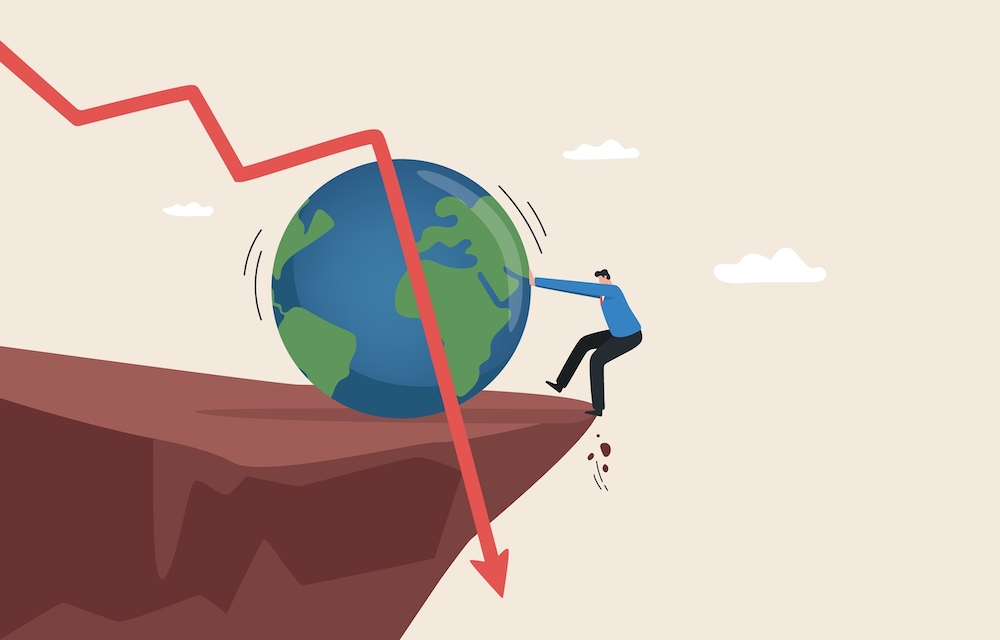A reader recently wrote to tell me he was perplexed.
The economy is not in that bad a shape, he noted, up a better-than-expected 2.6% in the third quarter.
Hiring and wages are strong. Unemployment is low. And corporate earnings have mostly come in ahead of expectations.
“So why,” he asked, “has this year’s stock market been such a disaster?”
The answer is interest rates, interest rates… and interest rates.
Yes, the global supply chain is still a mess. And the war in Ukraine hasn’t made things better.
But this year’s bear market in stocks – and bonds too for that matter – is almost entirely due to the Federal Reserve’s (and the bond market’s) response to the highest inflation in 41 years.
Sharply rising rates, in other words.
The level of interest rates is the primary metric that informs virtually every important financial decision.
Record-low mortgage rates caused a boom in the housing market.
Microscopic borrowing costs made it cheaper for consumers, businesses and governments to spend.
Ground-scraping yields made bonds and cash unattractive relative to equities.
And near-zero interest rates were rocket fuel for the stock market over the last 13 years.
But now they are sharply higher. And three policy errors made by governments worldwide are to blame.
The first was shutting down the global economy in response to the spread of COVID-19 rather than acting quickly and effectively to protect the health of the most vulnerable – primarily the elderly and those with preexisting conditions.
A less draconian response would have also helped prevent the second policy failure: blowout government spending.
The pandemic was always going to require a massive fiscal response. That was unavoidable.
But as Rahm Emanuel famously noted, “You never let a serious crisis go to waste.”
Politicians made sure that additional trillions were spent to fund pork barrel projects and – let’s be blunt – buy votes.
No politician wanted to be accused of doing too little. So they made sure they did too much.
(After all, it’s not like they were spending their own money.)
The classic definition of inflation is too much money chasing too few goods and services.
When you lock down businesses while simultaneously flooding the economy with money, the result is entirely predictable: high inflation.
What was less predictable was the third policy failure: the stated decision last year by the Federal Reserve (and other central banks) to let inflation run hot, well above its 2% price target.
Once the animals – or animal spirits – were out of the barn, it was hard to rein them in.
Because it let inflation gallop, the Fed has had to take severe steps – raising interest rates in three-quarter-point increments, the fastest pace in more than three decades.
This is not just strong medicine. It is risky medicine.
The reason central banks generally raise rates a quarter point at a time is it gives them a chance to pause and see the consequences of their actions.
Are retail sales softening? Is hiring slowing down? Is business investment falling?
But when inflation is running hot – even though last week’s numbers showed that prices continue to moderate – there isn’t time for that.
Instead, the Fed is busy putting out the fire it helped start. And potentially going too far, pushing the economy into a recession.
These three policy failures – lockdowns, blowout government spending and delayed tightening by the Fed – are the real culprits behind this year’s bear market.
And if the sell-off has felt different than earlier ones, that’s because it is.
Over the past 40 years, when economic activity started to wane and the stock market faltered, the Fed generally stepped in to ease the pain by lowering rates.
That will not happen this time.
The Federal Reserve has a dual mandate: full employment and low inflation.
With unemployment near record lows and inflation unacceptably high, the central bank has a green light to keep taking rates higher.
That means the much-vaunted “Fed put” is dead for now.
If you’re looking for a bright spot in all this, it’s that these factors are widely recognized and already priced into stocks.
However, markets tend to overshoot on the downside, just as they do on the upside.
That’s why stocks began a furious rally after last week’s inflation numbers came in better than expected.
A genuine change in the market’s direction may be under way – and it could last longer than most investors expect.
In Friday’s column, I’ll have more to say on how to position your portfolio accordingly.
Good investing,
Alex
